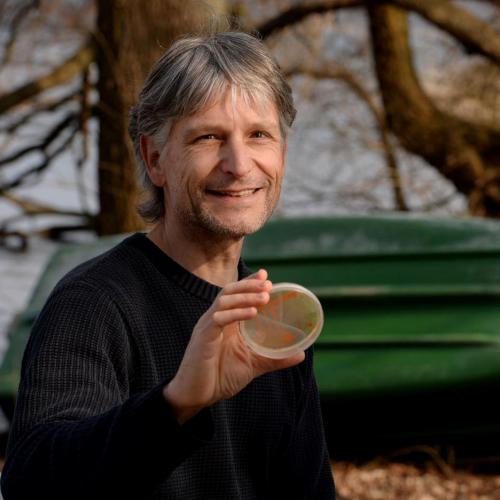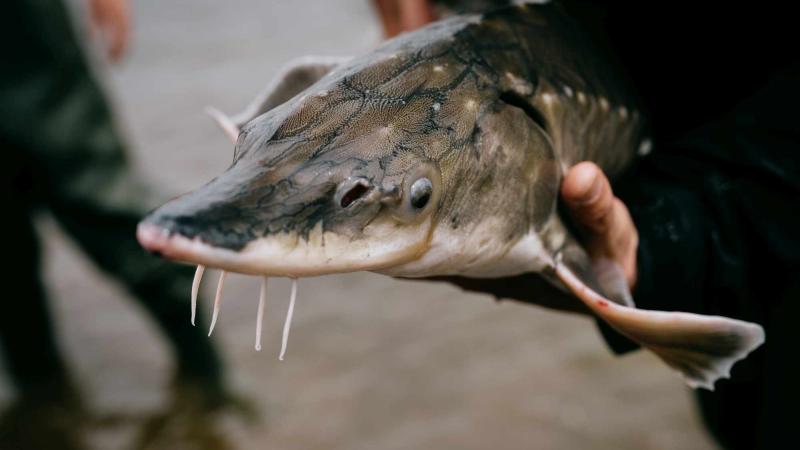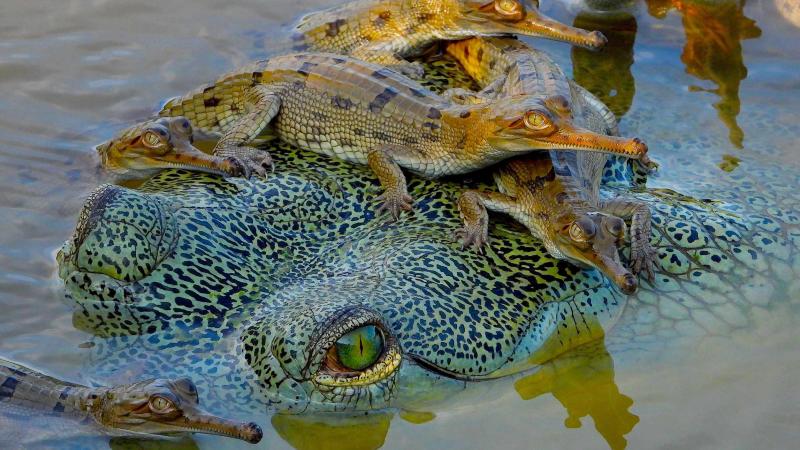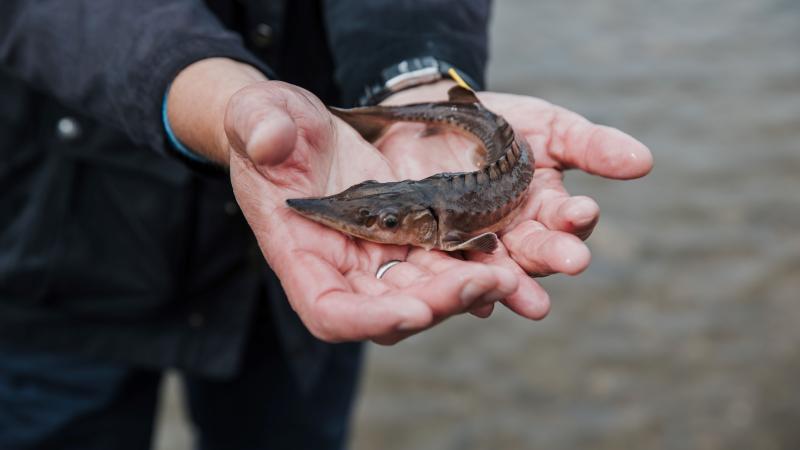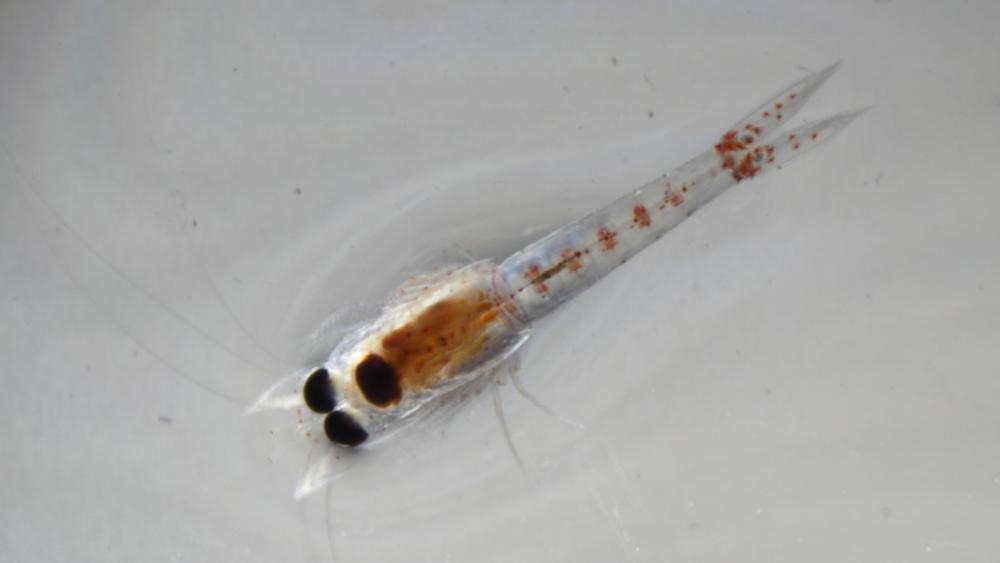
First record of invasive bloody-red mysid in Lake Stechlin. | Photo: Maren Lentz
The species originates from the Ponto-Caspian region. An increasing occurence of Hemimysis in aquatic ecosystems of north-eastern Germany has been known for some time, for example since 1992 in the Baltic Sea and for a few years also in Lake Werbellin (north-east of Berlin). However, this is the first record for Lake Stechlin, which is a protected area. Because this species feeds on zooplankton after its juvenile stage, Hemimysis can be a competitor, for example, for fish and their larvae, including the Fontane vendace (Coregonus fontanae), which is endemic to Lake Stechlin. On the other hand, this little shrimp is also a potential food source for other animal species. IGB‘s scientists have already begun further research on the occurrence and ecological consequences of this invasive species in Lake Stechlin.
It cannot yet be concluded since when the species has actually been occuring in the lake, how large the current population is, where it is distributed in the lake,and what effects this species could potentially have on the food web in Lake Stechlin.
„Because the species is night-active, they are best studied during night. Although this is time-consuming, we immediately initiated follow-up investigations, which revealed that the bloody-red mysid inhabits the shallower shore sections on at least the entire south eastern side of Stechlin. In contrast, no specimens have so far been caught in the open deep waters away from the shore“, explained Dr. Jens Nejstgaard, head of the zooplankton reserach group at IGB at Lake Stechlin. The sampling will now be continued throughout the entire lake to gather more information on the species in Lake Stechlin.
Hemimysis anomala grows to a length of 6 to 13 millimetres, the females are slightly larger than the males. They have large eyes for good night vision, are ivory-coloured or translucent and have red spots on their bodies, so-called chromatophores. While young animals feed mainly on phytoplankton, larger animals are omnivores: they eat mainly zooplankton, but also detritus, phytoplankton and insect larvae, and can even be canibalistic. Because of this great diversity of diets, they can have many different impacts on the ecosystem.
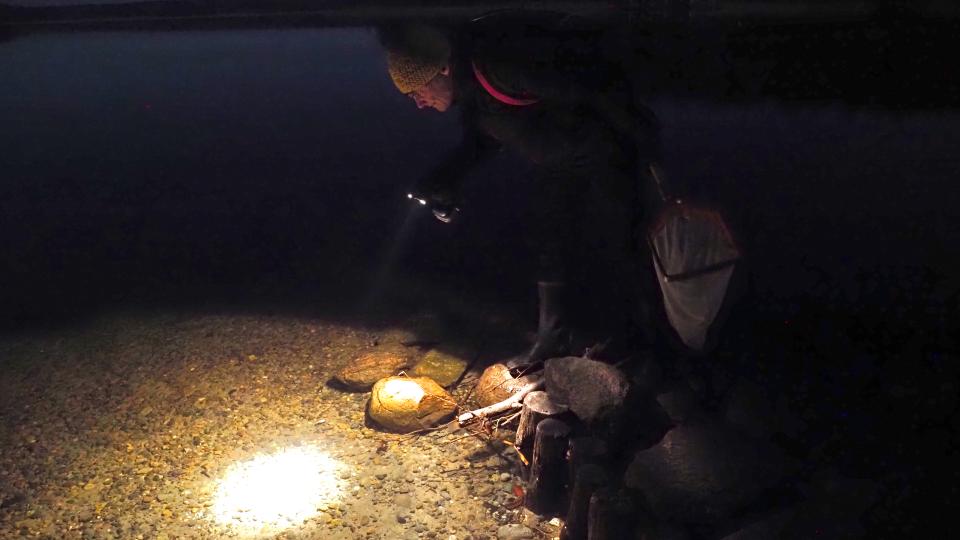
IGB researchers during a night-time sampling to confirm the presence of the invasive bloody-red mysid in Lake Stechlin. | Photo: Stella Berger

Hemimysis anomala lives in swarms.| Photo: Stella Berger
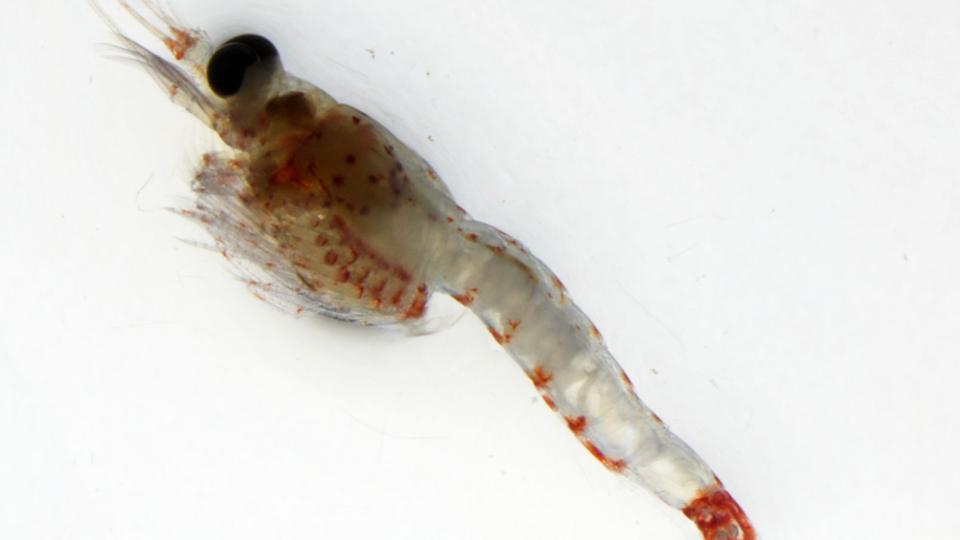
Hemimysis anomala grow to a length of 6 to 13 millimetres, are ivory-coloured or translucent and have red spots on their bodies. | Photo: Maren Lentz



